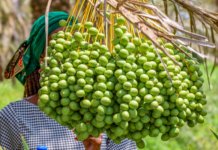A further breather for consumers as South Africa’s headline inflation shaved off two‑percentage points from the August print and decelerated further to 3.8% y/y in September 2024, which is a 42-month low. Monthly, headline inflation remained flat at 0.1% m/m. This is good news as inflation continues to trend below the SARB’s target midpoint of 4.5% which signals a potential further policy accommodation before the end of the year.
After ending its 8-month deceleration in August, food inflation surprised with a pause in September 2024 at 4.1% higher y/y. Again, food inflation remains at its lowest level in fifty months if we exclude the July 2024 outcome. Strong gains in the fruit and vegetables categories with an uptick of 2.9% and 6.8% respectively y/y were offset by a modest deceleration in the bread and cereals, meat, sugar, sweets and desserts, other foods, as well as a continued decline in the oils and fats subcategory. However, monthly pressures mainly from fruit and vegetables subindices saw food inflation edging 0.4% m/m in September from 0.2% in August.
Bread and cereals inflation continues to surprise on the downside despite the extreme upward pressure on current maize prices due to the near -term tight supply outlook from poor harvests in 2024. The eighth 2023/24 maize harvest estimate came in just below the 13-million-ton level at 12.80 million tons in the September update, with ending stocks of 955,282 tons as of 30 April 2025 that would yield availability of just 1 month, according to the South African Supply and Demand Estimates (SASDE) report. We saw average white maize prices increasing by 2.8% m/m and 41% y/y in September at R5,510/ ton, while its yellow counterpart was up 2.2% m/m and 8.7% y/y at R4,159/ ton. The strong import demand for the white maize category from the Southern Africa region continued to provide further upside pressure on prices. Vegetable inflation strengthened further as expected due to the impact of the earlier inclement weather on big-ticket items such as potatoes and tomatoes. However, the improved near-term supplies of these vegetables will help moderate prices as we head into the December festive season.
Nonetheless, given the combination of the improved weather outlook with the La Niña weather pattern in the forecast for the 2024/25 agriculture season, a strong global supply outlook, and a renewed rand exchange rate, we can expect prices to moderate across most commodities for the year ahead. For example, white maize futures for July 2025 delivery are already trading at low levels of R3,789/ ton relative to the current spot price of R5,623/ ton. Further, the global grain balance sheet remains solid after the improvement in wheat and rice thus placing downward pressure on international prices.








